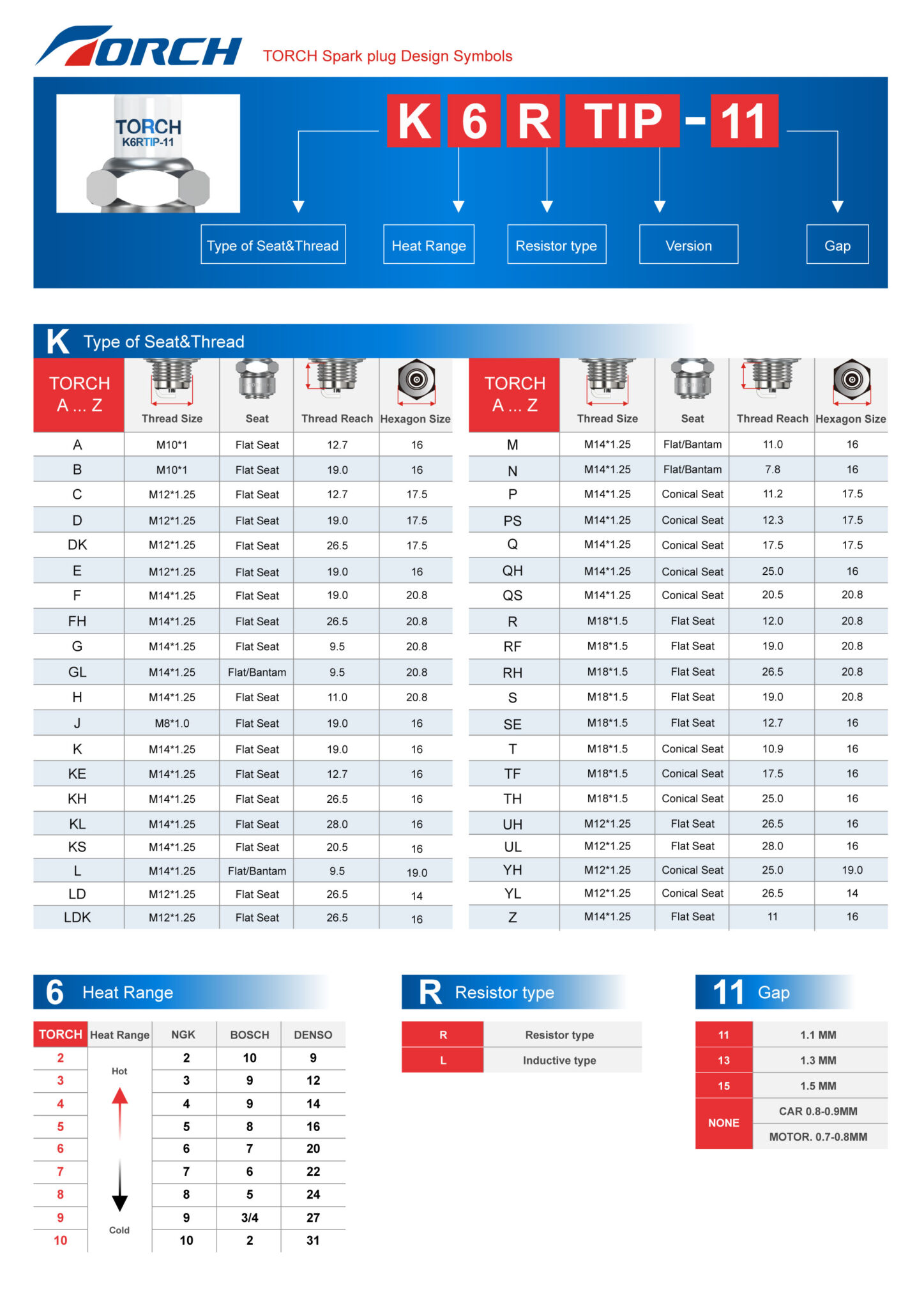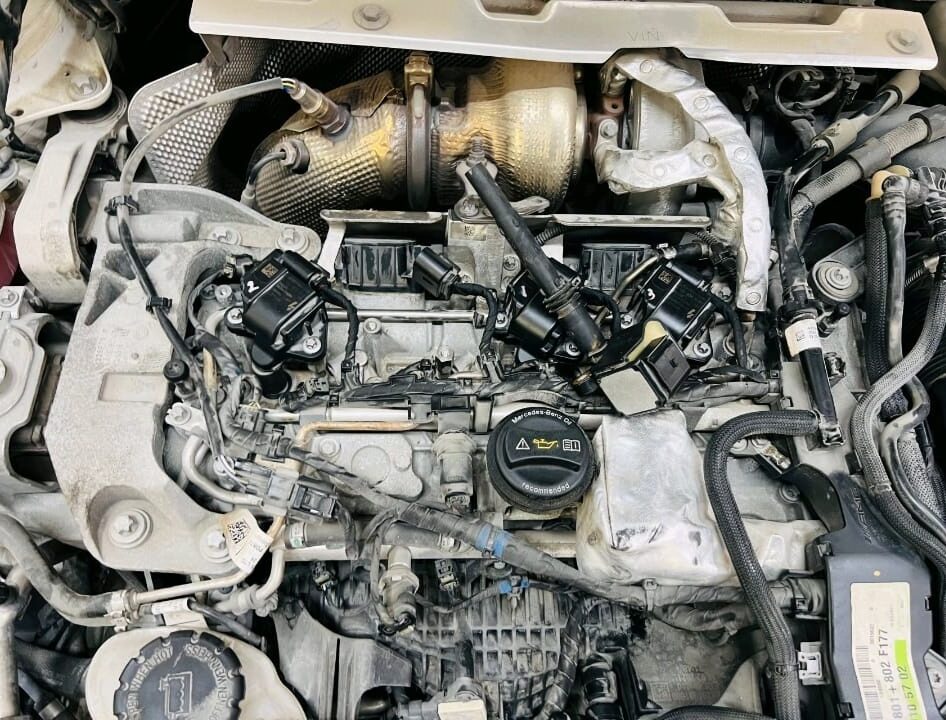Torch to NGK conversion chart helps identify the equivalent NGK spark plug for various Torch spark plugs, ensuring compatibility and optimal engine performance. By matching the specifications such as heat range, thread size, and reach, you can easily find the right NGK replacement for your Torch spark plugs.
Choosing the right spark plug for your engine is important for optimal performance and longevity. Spark plugs are responsible for igniting the air-fuel mixture in your engine’s combustion chamber, and using the wrong spark plug can cause misfires, reduced fuel efficiency, and even engine damage. If you’re looking to switch from Torch spark plugs to NGK, understanding the Torch to NGK conversion chart can make the transition smoother and ensure that you select the correct replacement.
In this comprehensive guide, we’ll provide you with a detailed Torch to NGK spark plug conversion chart, explain the differences between these two brands, and give you the necessary insights into selecting the best spark plug for your engine. By the end of this article, you’ll be equipped with the knowledge to confidently make the switch and keep your engine running at its best.
Contents
What is a Spark Plug Conversion?
A spark plug conversion refers to the process of finding a direct equivalent from a different brand of spark plugs. In this case, we’re focusing on converting from Torch spark plugs to NGK spark plugs. Many vehicle owners or mechanics prefer to replace old or worn-out Torch spark plugs with NGK plugs, as NGK is known for its reliability, performance, and advanced technology.
Spark plug conversions are particularly useful when the original spark plug brand is unavailable, or if you’re looking to try a different brand that offers better performance or longevity. For a successful conversion, it is important to consider several factors such as thread size, reach, heat range, and electrode type. By finding the right NGK equivalent for your Torch spark plug, you can ensure your engine runs smoothly and efficiently.
Torch to NGK Conversion Chart
One of the most important steps in converting from Torch to NGK spark plugs is identifying the right NGK equivalent for your Torch spark plug. Below is a detailed Torch to NGK conversion chart that matches the most commonly used Torch spark plugs with their NGK counterparts:
| Torch Spark Plug | NGK Equivalent |
|---|---|
| F6RTC | BPR6ES |
| F7RTC | BPR7ES |
| F8RTC | BPR8ES |
| F9RTC | BPR9ES |
| F6RTC | BPR6ES |
| F7RTA | BPR7ES |
| F8RTA | BPR8ES |
| F9RTA | BPR9ES |
| F6RT | BPR6ES |
| F7RT | BPR7ES |
| F8RT | BPR8ES |
| F9RT | BPR9ES |
This chart provides a direct cross-reference, making it easy to find the NGK spark plug that matches your current Torch spark plug. It’s important to verify the specifications such as thread size, reach, and heat range to ensure that the NGK replacement will work seamlessly in your engine. Mismatching spark plugs can lead to issues such as misfires, poor fuel efficiency, and potentially severe engine damage.
Spark Plug Specifications: Understanding the Key Elements
Before diving into the Torch to NGK conversion chart, it’s important to understand the different specifications of spark plugs, as these factors determine whether a spark plug will be compatible with your engine.
1. Heat Range
Heat range refers to the spark plug’s ability to dissipate heat from the combustion chamber. The heat range affects the temperature of the spark plug, which is crucial for proper combustion. A spark plug with a lower heat range (hotter plug) retains more heat, while a spark plug with a higher heat range (colder plug) expels heat more efficiently.
When converting spark plugs, you must match the heat range of the Torch plug with its NGK equivalent. For example, if you are using a Torch F6RTC, which is a hotter plug, you should ensure that the NGK BPR6ES is a suitable replacement with a similar heat range.
2. Thread Size
Thread size refers to the diameter and pitch of the spark plug’s threads. This specification ensures that the spark plug fits securely in the engine’s spark plug hole. Mismatching thread size can lead to improper installation, engine misfires, or even damage to the engine.
For example, the Torch F6RTC and its NGK counterpart, BPR6ES, both have the same thread size to ensure proper fitment.
3. Reach
Reach is the length of the spark plug’s threaded portion. It affects how far the spark plug extends into the combustion chamber. Using a spark plug with the wrong reach can result in the plug being too long (causing it to interfere with engine components) or too short (preventing proper combustion).
Make sure to check the reach of both your Torch spark plug and the NGK replacement before making the switch.
4. Gap
The gap is the distance between the center and ground electrodes. This distance affects the intensity of the spark produced by the plug. Spark plugs generally have a factory gap setting, but the gap may need to be adjusted based on engine requirements.
Always ensure that the gap on the NGK plug matches your engine’s requirements. Sometimes, the gap on the Torch spark plug may differ slightly from the NGK equivalent, and you may need to adjust the gap for optimal performance.
Frequently Asked Questions
Here are some FAQs about torch to ngk conversion chart –
1. How do I know if I need to switch from Torch to NGK spark plugs?
If your Torch spark plugs are worn out, damaged, or no longer available, switching to NGK plugs is a viable option. Make sure to refer to the Torch to NGK conversion chart and match the spark plug specifications correctly.
2. Can I use any NGK spark plug as a replacement for Torch?
No, you should always ensure that the NGK spark plug matches the specifications of the Torch spark plug. Refer to the conversion chart to find the right NGK equivalent.
3. How often should I replace my spark plugs?
Spark plugs should be replaced every 30,000 to 100,000 miles, depending on your vehicle’s make and model, as well as the type of spark plug used. Always check the manufacturer’s recommendations for your vehicle.
4. What happens if I use the wrong spark plug?
Using the wrong spark plug can lead to engine misfires, poor fuel efficiency, excessive wear, and even engine damage. Always make sure to use the correct spark plug for your engine.
5. Can I adjust the gap on my NGK spark plug?
Yes, you can adjust the gap on your NGK spark plug if necessary. However, it’s important to follow the manufacturer’s specifications to avoid damaging the plug or your engine.
Conclusion
Switching from Torch to NGK spark plugs doesn’t have to be complicated. By using the Torch to NGK conversion chart and understanding the specifications of each spark plug, you can easily make the switch and ensure that your engine runs efficiently. Whether you’re replacing worn-out plugs or looking for better performance, NGK spark plugs are a reliable choice that will help keep your engine in top condition.
Always refer to your vehicle’s manual and consult a professional mechanic if you’re unsure about which spark plug is best for your engine.





